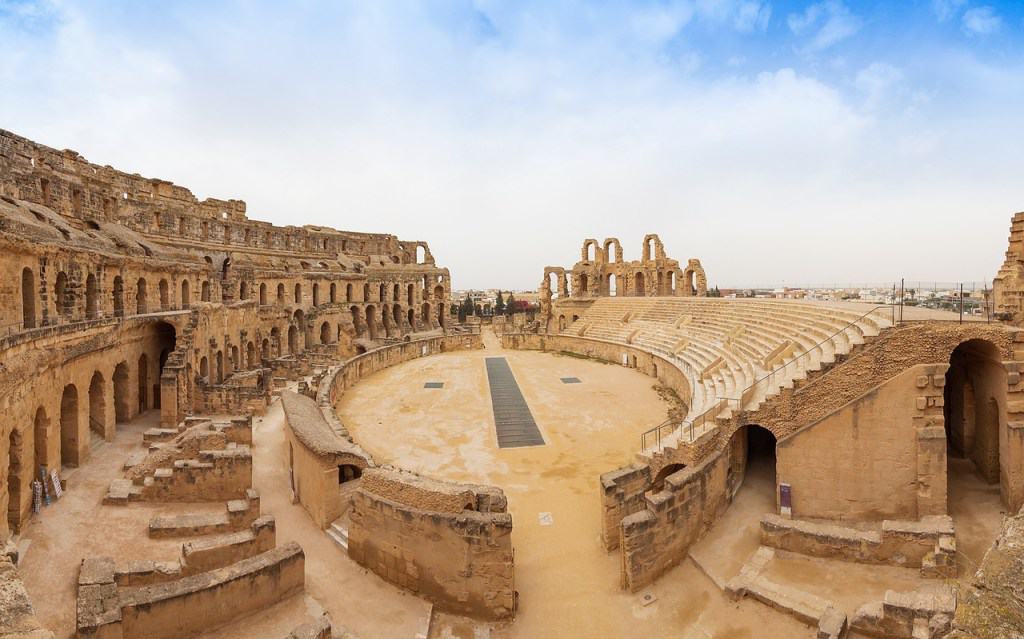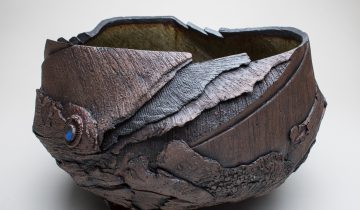El Jem Museum
Historical Significance of El Jem Museum
El Jem Museum, nestled in the heart of Tunisia, serves as a beacon of Roman history and culture. The museum, housed within an ancient Roman villa, presents an excellent example of Roman domestic architecture, offering an authentic view into the daily life of an aristocratic Roman family.
The El Jem Museum is best known for its proximity to the Amphitheatre of El Jem, a UNESCO World Heritage site. The amphitheater, one of the largest Roman amphitheaters in the world, stands as an embodiment of the grandeur of Roman architecture and engineering. It offers valuable insights into the spectacles that were once staged here, providing context to the exhibits within the museum.
The museum and the surrounding archaeological sites serve as an indispensable resource for historians and archaeologists. The diverse range of artifacts on display, from mosaic art to everyday utensils, offer a comprehensive picture of Roman civilization and its influence on modern Tunisian culture.
El Jem Museum not only preserves the past but also shapes the present by contributing to the local economy. As one of Tunisia’s most visited tourist attractions, it has a significant impact on local businesses, boosting tourism and employment in the region.
Lastly, the El Jem Museum fosters cultural exchange. It’s a gathering place for people from all over the world who come to appreciate the rich tapestry of human history. The museum’s educational programs and events engage both the local community and international visitors, fostering a deeper understanding and appreciation for Tunisia’s Roman heritage.
Unique Collections of El Jem Museum
El Jem Museum is home to a diverse collection of artifacts that provide a tangible connection to the Roman Empire. One of the most notable collections includes the Roman mosaics, which are lauded for their intricate designs and exceptional preservation. These mosaics, depicting various scenes from Roman mythology, highlight the artistic prowess of the Roman people.
Another noteworthy exhibit is the collection of Roman statuary. These life-sized statues, expertly crafted from marble and stone, depict Roman gods, goddesses, and notable personalities. The museum also houses a fascinating collection of Roman ceramics, pottery, and utensils that offer insights into the day-to-day life of the Roman people.
Coins from different periods of the Roman Empire form another critical part of the museum’s collection. These coins, often bearing the portraits of emperors, are invaluable resources for understanding the political dynamics and economic conditions of the time.
The museum also houses an extensive collection of inscriptions and epigraphs that provide valuable information about the social, religious, and legal aspects of Roman society. The collection is continually expanding with ongoing archaeological excavations in the surrounding area.
Finally, the El Jem Museum offers an immersive experience with its reconstructed Roman villa, complete with furnishings, where visitors can explore the architectural features and domestic arrangements typical of Roman homes.
El Jem Museum and Understanding the Roman Empire
El Jem Museum, with its vast collection of artifacts, plays a crucial role in broadening our understanding of the Roman Empire. The museum’s exhibits provide a comprehensive overview of the social, economic, and cultural aspects of Roman society, highlighting the far-reaching influence of Roman civilization.
Through the carefully preserved mosaics, we gain insight into the Roman aesthetic and the importance of art and mythology in Roman society. The epigraphs and inscriptions shed light on the structure and conventions of the Latin language, as well as the legal, social, and religious norms of the time.
The museum’s collection of everyday items such as utensils, ceramics, and furnishings provide a glimpse into the day-to-day life of the Roman people, while the collection of coins gives an understanding of the economic system and the reigns of various emperors.
Furthermore, the museum’s location, right next to the monumental El Jem Amphitheatre, gives visitors an understanding of the Roman public life, leisure activities, and their extraordinary architectural capabilities. The museum offers a unique perspective into the urban planning and living conditions of Roman times, thereby contributing immensely to our understanding of the Roman Empire.

Planning Your Visit to El Jem Museum
Planning a visit to the El Jem Museum is an opportunity to immerse oneself in the rich history and culture of the Roman Empire. To ensure a fruitful visit, it is advisable to consider the following points.
Firstly, the museum is open throughout the week, but it’s best to check the official website for the latest information on timings and any potential closures. It’s also worth considering a visit outside the peak tourist season (July and August) to avoid large crowds.
As part of the planning process, take the time to research and familiarize yourself with the history and context of the museum and its collections. This will enhance your understanding and appreciation of the exhibits.
When visiting, allocate ample time to explore both the museum and the nearby El Jem Amphitheatre. The museum also offers guided tours for a more in-depth understanding of the exhibits. Audio guides are available in several languages, enhancing the visitor experience.
The museum is accessible for individuals with mobility issues, with wheelchair ramps and elevators installed. For visitors’ convenience, the museum offers amenities such as restrooms, a café, and a gift shop.
Lastly, respect the rules and regulations of the museum, including restrictions on photography, to ensure the preservation of the artifacts and a pleasant experience for all visitors.
Conservation and Preservation Efforts at El Jem Museum
The El Jem Museum takes a proactive approach towards the conservation and preservation of its collection. It acknowledges the critical role it plays in protecting these invaluable pieces of history for future generations.
The museum’s conservation efforts include careful monitoring of the environmental conditions within the museum. Temperature, humidity, and light levels are controlled to prevent any deterioration of the artifacts.
The museum also employs professional conservators who regularly inspect the artifacts, assess their condition, and carry out necessary restoration work. This meticulous care ensures the long-term preservation of the collection.
Another significant part of the museum’s conservation efforts is its work in archaeological excavation. The museum collaborates with national and international institutions to carry out archaeological digs in the surrounding area. This work contributes to the ongoing discovery and preservation of historical artifacts.
Moreover, the museum places a strong emphasis on public education. It regularly organizes workshops and exhibitions to raise awareness about the importance of heritage conservation. By involving the community in these activities, the museum hopes to foster a sense of responsibility towards preserving our shared cultural heritage.
| Day | Opening Hours |
|---|---|
| Monday | 8 a.m. to 6:30 p.m. |
| Tuesday | 8 a.m. to 6:30 p.m. |
| Wednesday | 8 a.m. to 6:30 p.m. |
| Thursday | 8 a.m. to 6:30 p.m. |
| Friday | 8 a.m. to 6:30 p.m. |
| Saturday | 8 a.m. to 6:30 p.m. |
| Sunday | 8 a.m. to 6:30 p.m. |
| Topic | Summary |
|---|---|
| Historical Significance of El Jem Museum | El Jem Museum is an important site for understanding Roman history and culture in Tunisia, boosting local economy and fostering cultural exchange. |
| Unique Collections of El Jem Museum | The museum houses a vast collection of Roman mosaics, statues, coins, inscriptions, and everyday items. |
| Understanding the Roman Empire | El Jem Museum's exhibits provide a comprehensive understanding of the Roman Empire's social, economic, and cultural aspects. |
| Planning Your Visit | Consider visiting during off-peak season, familiarize with the museum's history, allow ample time, make use of guided tours, and follow the museum's rules and regulations. |
| Conservation and Preservation Efforts | The museum maintains stringent conservation measures, employs professional conservators, involves in archaeological excavations, and emphasizes public education in heritage conservation. |
FAQ
1. Where is El Jem Museum located?
El Jem Museum is located in the town of El Jem in eastern Tunisia.
2. What is the best time to visit El Jem Museum?
While the museum is open throughout the year, it’s advisable to visit during the off-peak season to avoid large crowds.
3. Does the museum offer guided tours?
Yes, the El Jem Museum offers guided tours that provide a more in-depth understanding of the exhibits.
4. What is the most notable collection in the museum?
One of the most notable collections in the El Jem Museum is the Roman mosaics due to their intricate designs and exceptional preservation.
5. How does the museum contribute to understanding the Roman Empire?
The museum’s diverse exhibits provide a comprehensive overview of Roman society’s social, economic, and cultural aspects, which broadens our understanding of the Roman Empire.
6. How is the museum preserving its artifacts?
The museum employs professional conservators, controls environmental conditions, and conducts regular checks to ensure the long-term preservation of its artifacts.
7. Does the museum engage in archaeological excavations?
Yes, the museum collaborates with national and international institutions to carry out archaeological digs in the surrounding area.





 No products in the basket.
No products in the basket.